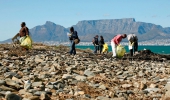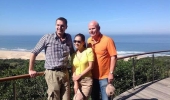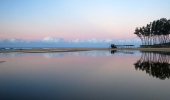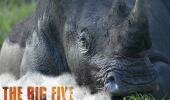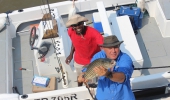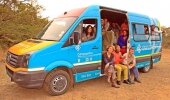Words: iSimangaliso Wetland Park Authority
iSimangaliso’s Sodwana Bay section is scheduled for a facelift in the next 24 months. The upgrades, which will cost approximately R72 million, include a new visitor reception and gate complex, new parking, new craft markets, and new recreational areas for day visitors.
The Sodwana Bay section of the Park is an integral and highly valued part of iSimangaliso. It contains some of the rarest forest types and species in the country and is a vibrant and exciting tourism destination for beach lovers, divers and fishermen.
Part of iSimangaliso’s mandate is to conserve and develop the Park in line with leading conservation and sustainability practices. Given the sensitive nature of the ecological processes at work within the Sodwana Bay section of the Park and highly dynamic intertidal and coastal dune cordon, a number of specialist studies were commissioned to better understand the dynamics of this area with a view to enhancing and protecting ecological functionality and promoting economic development. The studies addressed ecological issues in and around the Sodwana Beach node, considered how best to modernise day visitor facilities to improve the visitor experience, and optimise economic opportunities and job creation.
These detailed and considered studies, which have been conducted over a two-year period, include vegetation surveys, ecological functionality assessments, coastal dune dynamics, estuarine functional assessments, cultural heritage assessments, and ecological rehabilitation. These multi-disciplinary teams that have participated in this work include specialists in the fields of dune dynamics and estuarine management as well as civil engineers, landscape architects, architects and professionals who have successfully managed and implemented rehabilitation programmes along the coast line of KwaZulu-Natal.
Following these extensive specialist studies on all aspects of ecological and other impacts, a conceptual master plan for Sodwana Bay has been prepared. This includes some R11 million for a new entrance gate complex, R50 million for visitor facilities and ecological rehabilitation and around R10 million for road upgrades. The redevelopment of Sodwana’s day visitor areas includes the replacement and relocation of the existing dive shop, compressor facilities, convenience and food outlets; new community safety and first aid facilities; replacement and new ablutions (one of which was completed in first phase of the project); improved parking; new signage and park furniture such as picnic tables; and the rebuilding of the craft trading area. In line with iSimangaliso’s policy, all facilities will be disabled-friendly. The facelift will also require the removal of structures that are inappropriate or ‘not fit for purpose’, including those within the estuarine basin, and those that compromise the ecology and 'sense of place', one of the outstanding universal values for which iSimangaliso was inscribed as a World Heritage Site by UNESCO in 1999.
Central to the redevelopment is the systematic removal of alien plants to restore dune functioning coupled with rehabilitation and promotion of the recovery/growth of indigenous vegetation on the primary dune. The large increase in popularity, visitor numbers and types of recreation use over recent decades has increased pressure on the delicate ecosystem already strained by the planting of Casuarina trees in the 1960s to aid dune stabilisation, which they initially did with great success in certain areas. However, this interruption of natural processes also led to sand ‘starvation’ in others, including Jesser Point, which has been significantly eroded resulting in the need to remove infrastructure and arguably contributing to sand choking in the bay. Heavy seas have compounded the negative ecological impacts from Casuarina trees on Jesser Point, resulting in the collapse of infrastructure - including ablutions and beach ramps critical for launch site operations.
As one of iSimangaliso’s 'ten World Heritage jewels', this area is renowned not only for world class coral reefs, over 1200 species of marine fish (including coelacanths) and outstanding scuba diving, but also for some of the most rare and endangered forest types, as well as a highly sensitive and dynamic dune system.
“Successful change happens with good planning and public input. We thank our licensed operators and stakeholders at Sodwana for their inputs and believe that the balance that has been struck between ecological conservation, preservation of world heritage values, user convenience, development and equitable access will result in long-term benefits to visitors and business-owners in the region. Ultimately the success of Sodwana as a destination is dependent on the conservation of iSimangaliso’s world heritage values namely ecosystems, biodiversity and superlative natural value of astounding beauty,” says Park CEO Andrew Zaloumis.
The development and construction phase of the upgrades is expected to create at least 164 jobs, conservatively valued at R7 million. Additional new permanent jobs will be created during the operational phase of which 70% will go to previously disadvantaged individuals residing adjacent to the Park.
iSimangaliso’s Business Director, Terri Castis, adds: “The iSimangaliso Authority is proud to have celebrated 14 years of managing the internationally recognised iSimangaliso Wetland Park World Heritage Site for all of South Africa’s people. Our changing environment and progressive policies mean taking into account the needs of many varied stakeholders, a privilege and responsibility which we take very seriously. We have a responsibility to conserve this unique and important park for the global community and as such we are managing this world-renowned icon, not only for the benefit of this generation, but for our children and our children’s children.”
For more information on the iSimangaliso Wetland Park, follow us on Twitter, Instagram, Facebook and Youtube, or visit our website at www.isimangaliso.com.

